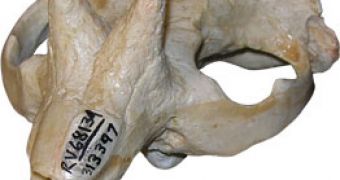Living underground is not that easy, requiring some special adaptations. Just look at the mole's humerus bones. "When seen in the lab, they are nothing like the long upper arm bones of any other mammal," said Samantha Hopkins, a paleontologist at the University of Oregon, investigating the evolution of burrowing mammals.
"Moles and mole rats are examples of mammals that have adapted to moving soil in rocky, root-packed soils, in opposition to most other burrowing mammals that prefer softer, dryer sandy soils. It requires a lot of morphological adaptation, a lot of tradeoffs, to be good at digging. That's intuitive to us as humans who have handled a shovel in the backyard. We know that it's really hard work to shift soil. Burrowing mammals acquire a complex of features that lets them handle whole days moving soil. They make for a great case for understanding convergent evolution because in spite of how difficult it is to do this, it seems to be worthwhile enough that many mammals have done it through time," said Hopkins at the annual meeting of the Geological Society of America.
Unrelated mammals developed extremely similar traits as a response to the same environmental challenge. Hopkins compares living burrowers but also fossil species to get a view of why digging proved so successful for some species, focusing on the evolution of shoulders, skulls, legs, feet and claws.
"Conventional thinking is that mammals evolved into burrowers after being driven into grassland habitats, where going into the soil is their only option to eat or escape in the absence of trees. There is, however, some evidence that the morphology and behavior required to dig in more compact or rocky soils is recognizably different from that used in softer soils. This study (still ongoing) aims to determine whether there is an influence of digging substrate on the evolution of digging.", said Hopkins.
Hopkins classified burrowing methods in several categories, like scratch, head-lift, incisor and humeral rotation. "Humans digging something out of sand with their hands is an example of scratch digging. The other methods are difficult or impossible for humans to even mimic," said Hopkins.
Her phD thesis at the University of California, Berkeley, investigated the extinct burrowing rodent Ceratogaulus, from an extinct family of digging squirrels like mammals, Mylagaulidae, flourishing about 20 MA ago. They used the head-lift technique: the tips of their snouts, driven by large neck muscles, removed the soil.
This is the only horned rodent known so far and the smallest horned mammal ever, and Hopkins showed that the horns were employed for keeping off predators, and not for digging, as previously believed.
Modern head-lift diggers are represented by marsupial moles, blind mole rats and mole voles. Other burrower groups are ground squirrels, marmots, prairie dogs (all these related to squirrels), badgers, burrowing owls, aardvarks, nutria, kangaroo rats, and armadillos.

 14 DAY TRIAL //
14 DAY TRIAL //